Before an exhibition, a young family member asked me, “could you give me some help as to how I ought to understand what I will be seeing?” The humility of his question endeared me to him–that he even cared to know beyond just fulfilling a social obligation. But I wondered whether art, any art, has lost its potential to communicate if folks in front of it remain only bewildered.
The Art Historian H.R. Rookmaaker gave thoughtful overview in his writings as to how Art, as we practice and observe it in the modern and post-modern eras has lost its voice. In the very centuries where artmaking became high Art, celebrated by elites (who alone could interpret it) and enshrined in museums, these artifacts no longer held much common value. Artists were billed from the Renaissance on as geniuses, and high priests of culture. But culture has turned away, and pop-art or entertainment art has taken up the void. Now it is not just the artists who are starving.
Artifact or artificial, is this the only choice? No wonder young viewers feel duped before any display of work.
I think of the beauty of certain sunsets (and some are discernibly “better” than others). These are available to anyone, no museum ticket required, no proper lighting necessary, no label or title needed, no “jurying in”. Does an explanation as to purpose need to follow such fleetingly beautiful expression? The patterns of waves on sand, or birds who fly in some mysterious formation only require some attention. This is popular art that is free, potentially meaningful, hardly artificial, with no hint of cynicism.
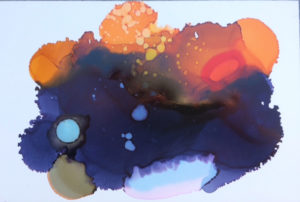 I struggle with my own voice in my work, living as I do in such a time of disintegration. I cannot make the work of my hands “say” what I hold in my heart so often. It is not my goal to be literal, but it is a desire to lift the viewer’s eyes. A friend of mine who is a photographer, grieving deeply over the death of her husband is now doing the best work of her career. We talked of this: why are we doing this work, this searching with images? Is it meaningful, is it what we “should be doing”? We got this far in our discussion: this work is an exploration into JOY. This expression is as fleeting as a sunset and as mysterious as a bird’s flight, but it is necessary, if even just for us. I have some ability to look, and to craft. Maybe through the work of my own hands others will see meaningfully also. For this, I keep on.
I struggle with my own voice in my work, living as I do in such a time of disintegration. I cannot make the work of my hands “say” what I hold in my heart so often. It is not my goal to be literal, but it is a desire to lift the viewer’s eyes. A friend of mine who is a photographer, grieving deeply over the death of her husband is now doing the best work of her career. We talked of this: why are we doing this work, this searching with images? Is it meaningful, is it what we “should be doing”? We got this far in our discussion: this work is an exploration into JOY. This expression is as fleeting as a sunset and as mysterious as a bird’s flight, but it is necessary, if even just for us. I have some ability to look, and to craft. Maybe through the work of my own hands others will see meaningfully also. For this, I keep on.
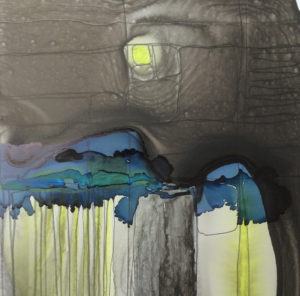 But we had to think forward now. We knew that if we made it to our own street we would never make it up the hill. I coached the man behind the wheel that we best park on the flat spot and walk that last way home. He is a determined man. I have been by his side over 4 decades. So we kept on going and incredibly swerved up the hill getting ready to negotiate the last turn. And there it was ahead, as if she was expecting us. Our neighbor, with the much flatter driveway had her garage door open, space made available for our truck. Her big light was on and she was beckoning us forward. We laughed again, “how come we’re so lucky?” “how come we’re not in a ditch also?” There is no good answer. And so my non-religious neighbor got out an antique hymnbook and the three of us sat at her table and sang. This is unexpected joy.
But we had to think forward now. We knew that if we made it to our own street we would never make it up the hill. I coached the man behind the wheel that we best park on the flat spot and walk that last way home. He is a determined man. I have been by his side over 4 decades. So we kept on going and incredibly swerved up the hill getting ready to negotiate the last turn. And there it was ahead, as if she was expecting us. Our neighbor, with the much flatter driveway had her garage door open, space made available for our truck. Her big light was on and she was beckoning us forward. We laughed again, “how come we’re so lucky?” “how come we’re not in a ditch also?” There is no good answer. And so my non-religious neighbor got out an antique hymnbook and the three of us sat at her table and sang. This is unexpected joy.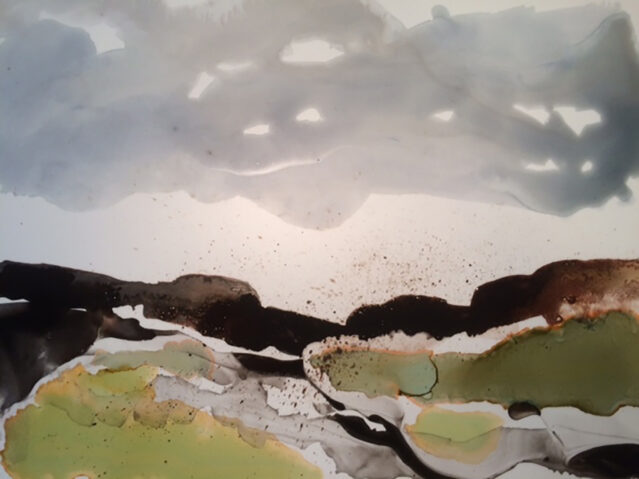

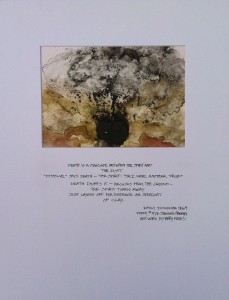
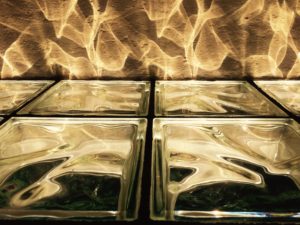 Amid the noisy machines, flashing tv screens and the running track, there is a window at my fitness center. It is a glass block section that scatters light into the space where we work. Everyone inside has an individual training plan going on. There’s sweat, determined looks, clocks, and all around the sounds of metal clanking. I was tromping along with my earbuds locked into a current-events podcast when I got stopped by this view. This was greater news.
Amid the noisy machines, flashing tv screens and the running track, there is a window at my fitness center. It is a glass block section that scatters light into the space where we work. Everyone inside has an individual training plan going on. There’s sweat, determined looks, clocks, and all around the sounds of metal clanking. I was tromping along with my earbuds locked into a current-events podcast when I got stopped by this view. This was greater news. I found her sitting outside alone when I went back out to douse the campfire. Her heart language is Chinese, but here in my back yard she was using her phone to find words in English to capture what she was feeling. She showed me the little screen and a collection of words she thought perfect. Then we both were thrilled. She had just discovered one of my very favorite poems on her own. Here is Yeats’ “When You Are Old”
I found her sitting outside alone when I went back out to douse the campfire. Her heart language is Chinese, but here in my back yard she was using her phone to find words in English to capture what she was feeling. She showed me the little screen and a collection of words she thought perfect. Then we both were thrilled. She had just discovered one of my very favorite poems on her own. Here is Yeats’ “When You Are Old”